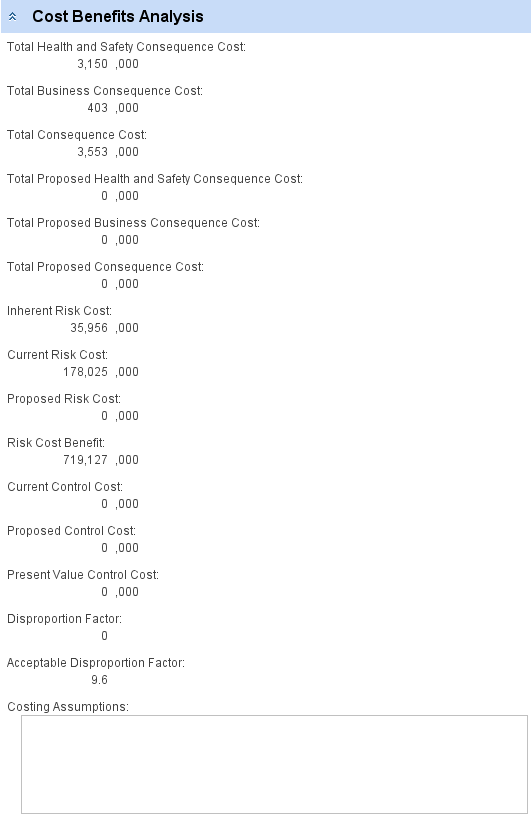We have learned that risk reduction measures (safeguards/controls) are in many forms, either hardware based, administrative controls based, or a combination of both. The general philosophy of risk management is that if a risk reduction, however small, can be achieved by administrative control (SMS procedures) using existing resources, then it should be implemented, and a cost-benefit analysis (CBA) may not be required.
When a hardware solution is identified, a CBA is generally conducted. It takes the following steps:
| • | Calculate the monetary loss resulting from the accident event. |
| • | Multiply the frequency of the accident event by the loss estimate to obtain a probable loss per annum ($ pa). |
| • | Calculate the revised monetary loss as a result of the risk reduction measure. |
| • | Calculate the revised frequency of the accident, assuming the new control measure in place. |
| • | Calculate the revised probable loss (new frequency times new loss value in $). |
| • | The difference in the two probable loss values gives an indication of the reduction in loss by the implementation of the control measure. This can be treated as a de facto return on investment. |
| • | Evaluate the life cycle cost of the control measure. This includes capital cost, design and installation cost, and on-going maintenance costs for the expected life of the component. |
These methodologies mentioned above can be applied through RiskView Designer which contains the ability to conduct Cost-Benefit Analysis for both Qualitative (Automatically Calculated) or Semi-Quantitative Analysed risk. RiskView can define:
| • | The financial impact of certain consequences (health & safety and business). |
| • | The financial impact of the Risk (current and proposed). |
| • | The financial cost of preventative and mitigative controls (current, proposed and net present value). |
| • | The disproportion factor and acceptable disproportion factor. |

See Options for further information on how to activate or deactivate Cost Benefit Analysis.

